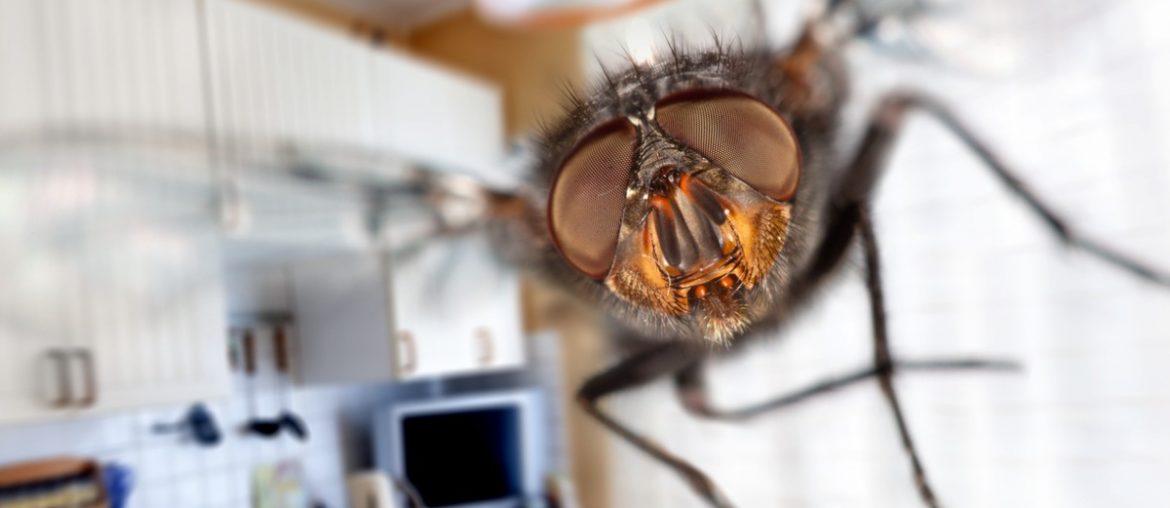One of the essential principles of pest control is to focus on suppressing the activity of unwanted insects or animals. However, eradication is difficult, especially when dealing with common or endemic species. You may be able to eliminate a pest from your home one year, but it will likely be back the following year in the same or greater numbers.
Pests can also be more prevalent in some seasons and dormant in others. This cycle can leave you constantly playing catch-up and dealing with a new invasion as soon as you have dealt with the previous one. While homeowners will need to be aware of the prominent pests of each season, pest professionals will need to know how to cater their marketing and services to customers that speak to their needs for the upcoming season.
The best strategy to get ahead of pests is by understanding their seasonal activities and taking steps to control the population and keeping them out of your home before they enter.
Planning for Pests With the Seasons
Homeowners and pest control professionals can both adopt a seasonal planning approach.
For homeowners who live in four-season climates, the goal is to address pests the season before they are active, removing nests and plugging access points into the home when possible.
For pest control companies, the weeks before the seasons change are important to ensure the necessary equipment and products are in stock. Pest control businesses can also prepare marketing materials and campaigns to focus on treating the most active pests in the coming season.
Here is a look at the pests that are typically most active in each of the seasons.
Spring Pests
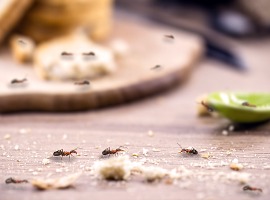
Bugs become active in the springtime for several reasons. In cool climates, they begin to venture out as the days get warmer after burrowing during the winter to avoid deadly freezing temperatures. As flowers and plants bloom, they can harvest important nutrients they need to survive.
Springtime is also a season for mating, laying eggs, and building nests and colonies that will grow throughout the warmer seasons.
Here are some of the most active springtime bugs.
- Ants: Ant infestations are more noticeable in the late spring and early summer. However, early spring is when they start gathering materials and building their colonies.
- Houseflies: Houseflies and related cluster flies come out of their larval stage in the springtime. Once they can fly, they immediately seek food, flocking to garbage cans, and getting inside homes.
- Termites: Termites chew through wood, causing an estimated $5 billion in damage to homes in the U.S. each year. Most species emerge from the ground in the spring and swarm to wood, which they can eat for 24 hours per day without resting.
- Bees: Bees begin seeking pollen and building their hives in the springtime. Though more active later in the summer, spring is the most important time of year for these stinging insects.
Spring is an important time of year for pest prevention because you can take steps to keep bugs from establishing nests or colonies in problematic places.
Pest Prevention in the Spring
Many pests perform important tasks that benefit the environment, and they may be natural predators for other types of pests. Bees are essential for pollination and plant growth, for example, and bats can eat up to 1,000 mosquitoes in an hour.
When people start seeing these pests around their houses, they may be tempted to eradicate them, but they could be seriously harming their local ecosystem in the process. Instead, keep pollen-producing plants away from the home to prevent bees from gathering around your property. You can also look for signs of nests and hives inside or next to your home.
During this time, pest control companies should try marketing prevention or nest removal services and even inspections as a way to preserve pollinator populations before they infest people’s homes and become a problem.
Summer Pests
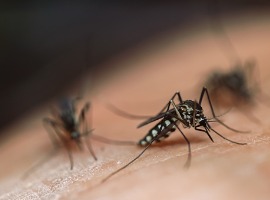
While springtime pests are a nuisance, a lot of the insects and bugs that multiply during the warmest season can sting, bite, or attach themselves to people and pets. They are especially annoying because summer is the time when everyone wants to be outside enjoying the weather.
Here are the pests to be aware of during the summertime.
- Mosquitoes: Mosquitoes are blood-sucking insects that leave itchy welts after they bite. They lay eggs in areas with standing and stagnant water, and they can carry dangerous diseases.
- Stinging insects: Wasps, hornets, yellow jackets, and other stinging species thrive in hot weather. Each type has different nesting habits. Yellow jackets, for instance, create hives in the ground, while wasps make paper-like hives under eaves.
- Biting flies: Some flies are more than a nuisance. Deer flies, horse flies, and black flies can bite. Like mosquitoes, their goal is to drink blood rather than sting, and they too can share diseases with humans.
- Fleas: Fleas are tiny parasites that typically bite pets. They can get inside your home by burrowing into your dog or cat’s hair. They will bite humans if given the opportunity, but they usually prefer to live on furry animals.
- Ticks: Ticks are small parasites living in wooded or grassy areas. They attach themselves to their hosts and suck their blood. Some species, such as the tiny deer tick, can transmit dangerous diseases like Lyme disease.
Though eradication is often impossible, you can take steps to control these summertime stringers on your property.
Pest Prevention in the Summer
The first step is to create a haven within your home by keeping screens tight and fixing gaps immediately. You should also ensure doors remain shut and close quickly after entering and exiting.
You can limit mosquito populations by draining standing water and not removing the insect’s natural predators, which include spiders, dragonflies, frogs, spider mites, and bats. There are also excellent natural fly repellent options.
You should also keep brush trimmed to limit the habitat of ticks. If you are outside, you should always check yourself, as well as your children and pets, for the small arachnids, since they can be difficult to see until they have already been attached for several days.
To prevent wasp stings, remove the hives, but do so cautiously. If you are unable to safely remove one by yourself, it is best to call a professional to handle the job. These stingers may not be aggressive normally, but they will certainly sting if their hive is destroyed.
Fall Pests
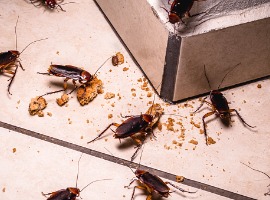
Animals spend the autumn preparing for colder weather ahead. In the case of some pests, preparations include trying to get into your home. Mice, roaches, and certain types of beetles may prefer the outdoors during the summer, but when the mercury drops, they are attracted to the warmth of your house.
Here are some of the most common fall invaders.
- Cockroaches: Cockroaches are notoriously hard to kill and can carry dangerous germs. They gravitate to warm areas and can enter homes through pipes and drains.
- Stink bugs: Stink bugs are beetles with a distinctive shield shape and camouflage-like color patterns. They are not dangerous and do not reproduce once entering a home, but they have an unpleasant smell that can cause an allergic reaction in people with sensitive respiratory systems.
- Mice: Mice seek the warmth and ready food supply of homes as the weather cools. They can squeeze through tiny gaps in your home, such as holes around pipes or wires.
During this season, pest prevention focuses on keeping these unwanted creatures out of our house.
Pest Prevention in the Fall
One of the best ways to prevent pests from accessing your house is to seal off potential entry points. You can inspect inlets for pipes and wires and caulk to seal any gaps, if necessary. Gaps in foundations and window and door frames can also provide entry points for bugs and rodents.
Winter Pests
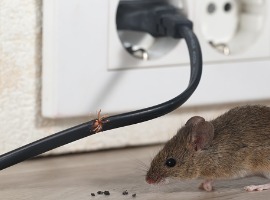
In the wintertime, pest control focuses solely on the inside of your home. All warm-weather insects are dormant. The only pests to worry about during this season are those that have found their way indoors.
Here are some of the most common pests homeowners have to contend with during the winter.
- Spiders: Spiders can find their way into attics, basements, and closets. Only two spiders in the U.S., the black widow and brown recluse, have dangerous bites. The rest, however, are harmless and may venture into bedrooms and bathrooms, startling family members.
- Bed bugs: Bed bugs are possible year-round. They get into the home when someone brings them back on themselves, their clothing, or contaminated bedding. Bed bugs get into clothing and bedding and usually require professional help to remove them.
- Rodents: Mice aren’t the only rodents who get inside during colder weather. Squirrels, for example, may try to enter attics, garages, or crawl spaces to build nests and take advantage of heated homes.
Depending on your location, other rodent species, such as shrews, voles, or rats could enter your home during the wintertime.
Pest Prevention in the Winter
Winter pest prevention involves shoring up the sealing projects begun in the fall. Adding weather stripping around doors and ensuring all vents and chimneys are secure is important.
Rodents can sometimes gnaw their way inside, so regularly inspecting exterior walls for signs of gnawing can be a good idea, especially if you have had rodent issues in your home in the past.
Pest control companies may have some wintertime business related to bed bugs and rodent problems, but they can also use the downtime to prepare for the coming spring and summer busy seasons.

